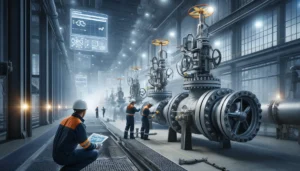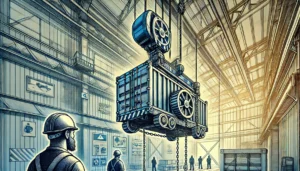The piping system utilizes static machinery and their supporting structures, which also feature industrial pipe fittings for connection. The pipeline is used to transport different phases of materials, namely liquids, gaseous substances, and at certain times even solid materials. It is important to be familiar with different types of fittings, their materials and applications, the processes of choosing and integrating them in order to ensure proper design or maintenance of an industrial system.
Types of Pipe Fittings
- Elbows: Elbows serve to change the flow direction within a pipe. These elbows come in 90° and 45 ° angles. They can also be short radius or long radius hence have different flow dynamics and space considerations.
- Tees: They are utilized to bifurcate a pipeline into two different directions, and shaped like the letter T. Tee fittings can be used either equally (same pipe size on all three ends) or reducing (one end smaller to connect different pipe sizes).
- Reducers: These pipe fittings are used to connect pipes of different diameters. Some types of concentric pipes that have common centerlines are called concentric and eccentric dune have an offset centerline. These types are used in certain situations which help eliminate air.
- Couplings: These are short pipe fittings, with the aim of joining two pipes that are in a straight position. They can also be full, which means that the pipes that have the same diameter are connected, or reduced when pipes of different diameters are connected.
- Unions: Similar to couplings, unions provide ease of disconnection and maintenance of pipes. They are mostly applied in cases that require constant attachment and detachment.
- Caps and Plugs: Caps and plugs are needed for closing either the end of a pipe or fittings such as tees or couplings. These are critical when there is a need to terminate pipe runs or possible expansion points.
- Flanges: Flanges are fittings that serve as joint instruments to connect pipes, valves, pumps and other piping system components and equipment. They serve as access openings for cleaning, inspection or modification of fill pipes. Flanges are usually attached to pipes by welding or screwing them into position and then joined together with bolts.
- Crosses: Cross fittings have one inlet and three outlets (or the opposite configuration), and are applied in places where four pipes intersect. These are not very common because they tend to be the center of stress concentration.
- Bushings: Bushings are used in joining pipes of different diameters. They are fittings that reduce the size of a bore from large to small, thus threading the join. They are usually used for low-pressure applications.
- Adapters: Pipe connectors which are used to join pipes of different categories and types. It could be either of the male or female types which has threads and serves the purpose of altering an end of a pipe fitting to suit the connecting pipe or other equipment.
Materials Used in Pipe Fitting
The adaptability of materials used in pipe fittings is determined by the type of use, the type of medium in pipe and external factors such as temperature. These include:
- Steel: Steel fittings are used where the structural strength and resistance to deformation is required, and they bear high pressure as well as temperature.
- Stainless Steel: Used in industries that deal with corrosive liquids or require high sanitation specifications, for foodstuffs and pharmaceuticals.
- Copper: Used mainly for plumbing and all heating systems due to its great thermal conductivity and corrosion resistance.
- Brass: A metal that is strong, ductile, resistant to corrosion and therefore used for piping with water, gases, and some chemicals.
- Plastic (PVC, CPVC, PP, PVDF): These are lightweight materials that do not get corroded hence usable in different fields especially in areas where metal fittings would corrode.
Pipe Fittings Applications
Pipe fittings are used in different sectors such as:
- Oil and Gas: Responsible for the movement of crude oil, natural gas, and refined products. This type of center requires the use of pipe fittings that bear high pressure and are corrosion resistant.
- Chemical Processing: This application varies in importance because it relates to the conveying of aggressive chemicals, which will use special fittings from corrosion-resistant materials.
- Water Treatment: Used in the systems for purification and distribution of water, where the fittings must be more resistant to durable.
- Pharmaceuticals: Requires high purity fittings in order to prevent contamination in the manufacture of medicines.
- Food and Beverage: Removal of sanitary fittings while cleaning is very easy as well as prevention of bacterial growth.
Considerations When Choosing Pipe Fittings
- Compatibility: When choosing, ensure that the type of the fitting material is compatible with the pipe material and medium that is being transported. Doing so prevents corrosion or degradation .
- Pressure and Temperature Ratings: The selecting process includes withstanding maximum operating pressure and temperature of the system.
- Size and Configuration: These include maintaining System integrity and performance, by matching the pipe size and desired flow configuration.
- Standards And Certifications: In regulated industries, the certification to certain standards increases credibility. Ensure fittings comply with industry standards such as ASME and ASTM.
Conclusion
It is good to know about the different types of industrial pipe fittings, their materials, use cases, and how to choose them for effective and safe piping systems design and maintenance. The proper selection and installation of pipe fittings always enhances the system’s life by eliminating leaks, failures, and expensive downtimes. Additional assistance on particular applications can be sourced from manufacturers and industry standards.










